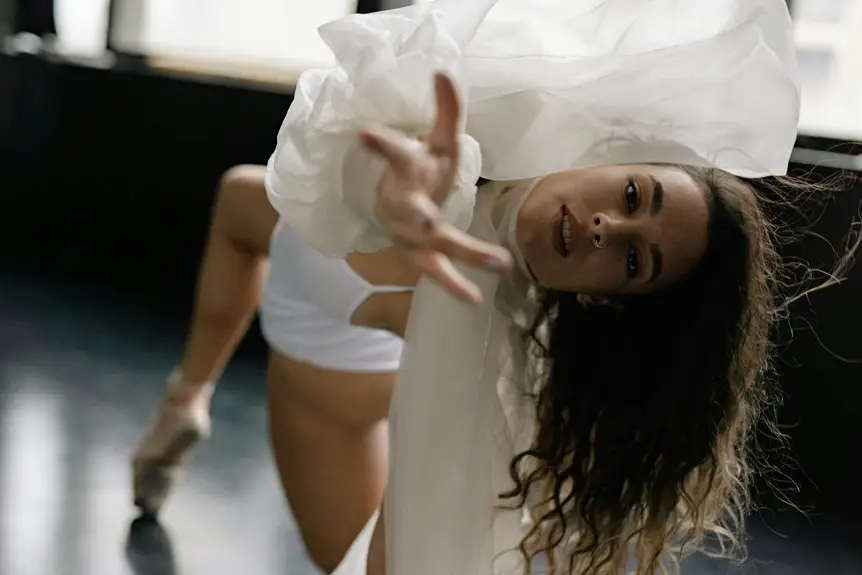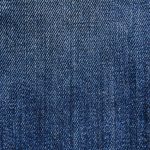You’ll find cotton scrim fabric incredibly versatile for theatre, art, and crafts because it’s lightweight, breathable, and surprisingly strong. Its open weave lets air and light pass through, making it perfect for creating shadow effects or ethereal backdrops on stage. In art, you can experiment with texture and transparency, while in crafts, it’s great for lantern covers or layered decorations. Keep going to discover how to make the most of cotton scrim’s unique qualities in your projects.
Table of Contents
Key Takeaways
- Cotton scrim’s lightweight, breathable, and durable open weave is ideal for versatile theatre, art, and craft applications.
- In theatre, scrim enables dramatic shadow effects, seamless backdrops, and masking with its semi-transparent fabric.
- Artists use scrim for textured, layered canvases and light-filtering installations that enhance depth and visual intrigue.
- Craft projects benefit from scrim’s flexibility for lantern covers, wall hangings, gift wraps, and mixed media bases.
- Handling tips include using fabric paints, stretching tightly on frames, securing edges, and testing techniques on scraps.
Characteristics and Properties of Cotton Scrim Fabric
Cotton scrim fabric combines lightweight strength and breathability, making it ideal for various applications.
When you handle this fabric, you’ll notice its open weave structure, which allows air to pass through easily while maintaining durability.
Its natural cotton fibers give it a soft texture, yet the tight weave provides surprising resilience.
You’ll appreciate that scrim resists tearing and fraying, even when stretched or manipulated.
Plus, it’s easy to dye, so you can customize colors without compromising its strength.
The fabric’s translucency lets light filter through, offering versatility in layering or creating subtle visual effects.
When you work with cotton scrim, you get a blend of flexibility, strength, and breathability that supports both practical and creative uses.
Applications of Cotton Scrim in Theatre Productions
When you want to create dynamic stage effects, scrim fabric plays an essential role in theatre productions. You can use cotton scrim to craft seamless backdrops that transform scenes with lighting changes—its semi-transparent weave allows you to reveal or conceal objects and actors effortlessly.
It’s perfect for shadow and silhouette effects, giving you dramatic visual depth. Because it’s lightweight and durable, you can hang and move it easily during performances.
Ideal for shadows and silhouettes, cotton scrim adds dramatic depth while remaining lightweight and easy to maneuver on stage.
You’ll also find cotton scrim useful for masking set pieces or creating ethereal, dreamlike atmospheres. Its versatility means you can paint or dye it to match your design needs, making it a practical choice for various theatrical applications.
Using cotton scrim, you can enhance storytelling with compelling visual illusions that captivate your audience.
Creative Uses of Cotton Scrim in Visual Arts
Although often associated with theatre, scrim fabric offers unique opportunities for visual artists to experiment with texture, transparency, and layering. You can use cotton scrim to create mixed media canvases, allowing light to filter through layers for dynamic effects. Its fragile yet durable nature invites you to explore delicate installations or textured backdrops. Manipulating scrim with paint or dyes adds depth and mystery to your work. Here’s a quick look at how cotton scrim can evoke different emotions:
| Texture | Transparency | Emotion |
|---|---|---|
| Soft, gauzy | Sheer layers | Dreamy |
| Rough, crinkled | Diffused light | Nostalgic |
| Smooth, taut | Partial veil | Intrigue |
| Wrinkled | Shadow play | Tension |
| Painted mesh | Color washes | Serenity |
Use scrim to let your art breathe and surprise.
Craft Projects Utilizing Cotton Scrim Fabric
Scrim fabric opens up a world of possibilities for your craft projects, thanks to its lightweight and breathable qualities. You can easily create layered decorations, such as textured wall hangings or delicate wreaths, using cotton scrim.
Its translucent nature makes it perfect for crafting lantern covers or diffusers that softly filter light. You might also enjoy making custom gift wraps or reusable produce bags that combine durability with eco-friendliness.
If you like experimenting with mixed media, scrim serves as an excellent base for painting or dyeing, adding interesting texture. Plus, you can stitch or glue it onto other materials to add subtle patterns and depth.
Whether you’re crafting home décor or personalized accessories, cotton scrim adapts well, letting your creativity shine through.
Tips for Working With Cotton Scrim in Various Mediums
Because cotton scrim is delicate yet versatile, you’ll want to handle it with care to achieve the best results across different mediums.
When painting on scrim, use fabric paints or diluted acrylics to avoid stiffening the fabric. Always stretch the scrim tightly on a frame to prevent wrinkles or sagging. If you’re using scrim in theatre, secure edges with strong stitching or fabric glue to withstand movement.
For craft projects, pair scrim with sturdier fabrics or backing materials to add stability. When dyeing, soak scrim evenly and avoid harsh chemicals that can weaken fibers.
Finally, always test your techniques on a small scrap first to see how the fabric reacts, ensuring your final project looks flawless and lasts longer.
Frequently Asked Questions
Where Can I Buy High-Quality Cotton Scrim Fabric?
You won’t believe it, but you can snag high-quality cotton scrim fabric from specialty fabric stores, online marketplaces like Etsy or Amazon, and theatrical supply shops. Just plunge in, and you’ll find the perfect scrim in no time!
How Does Cotton Scrim Compare to Synthetic Scrim Materials?
You’ll find cotton scrim more breathable and natural-feeling than synthetic options, but synthetics usually offer greater durability and resistance to moisture. Choose based on your project’s needs—comfort or toughness.
Is Cotton Scrim Fabric Environmentally Friendly?
You might say cotton scrim’s eco-friendliness is like a gentle breeze in a forest—natural, biodegradable, and renewable. You’ll appreciate it’s far greener than synthetic options, which often drain the planet’s resources and linger forever.
Can Cotton Scrim Be Dyed or Printed on Easily?
You can easily dye or print on cotton scrim since it’s made of natural fibers that absorb colors well. Just make sure to pre-wash and choose the right dye for vibrant, lasting results.
What Is the Average Cost of Cotton Scrim Fabric per Yard?
You’ll find cotton scrim fabric typically costs between $3 and $8 per yard, depending on quality and seller. Buying in bulk often lowers the price, so shop around to get the best deal for your project.
- Does Chiffon Fabric Stink - July 15, 2025
- Does Chiffon Fabric Affect the Economy - July 15, 2025
- Does Cotton Fabric Have a Nap - July 15, 2025







